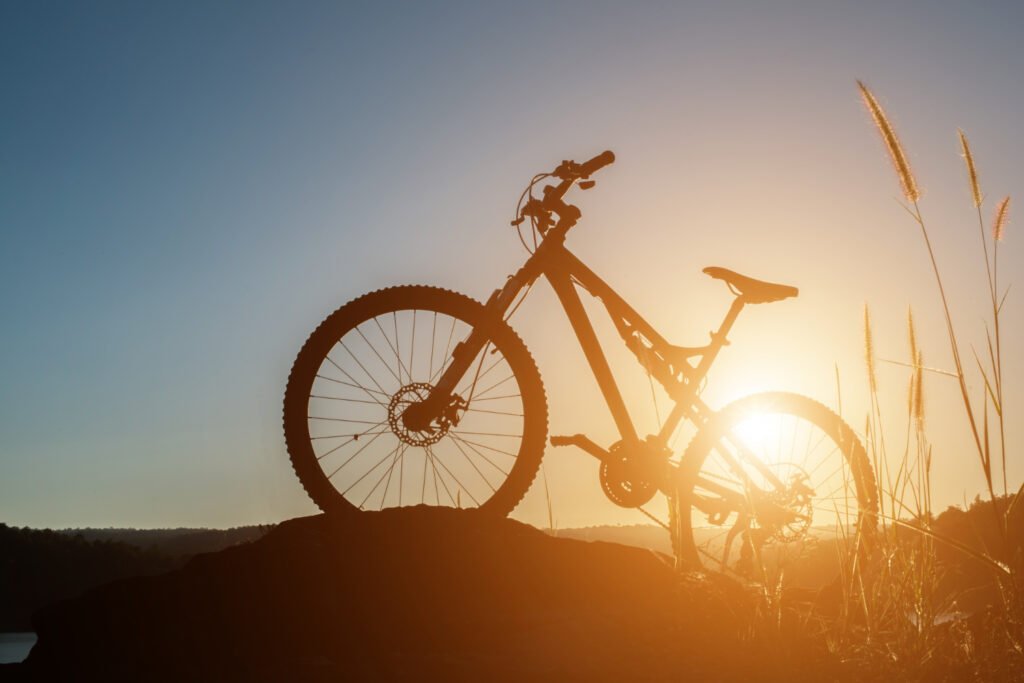The Best Fluffy Pancakes recipe you will fall in love with. Full of tips and tricks to help you make the best pancakes.
Hardtail vs Full Suspension: Which Mountain Bike Should You Buy?
A practical guide to choosing the right mountain bike frame style.

If you’re diving into the world of mountain biking, one of the first—and most important—decisions you’ll face is choosing between a hardtail and a full-suspension mountain bike. It’s a choice that shapes your ride from the very first pedal stroke: how you climb, descend, maintain control, and even how fast your skills progress.
This article breaks down everything you need to know about these two key mountain bike categories. Whether you’re gearing up for smooth singletrack or rough technical descents, understanding how suspension affects your ride is essential.
Suspension Setup: Understanding the Fundamental Difference
The core distinction in mountain biking lies in suspension design and functionality. Hardtail mountain bikes feature front suspension forks only, leaving the rear triangle completely rigid. This creates a direct connection between rider and trail through the rear wheel. Full-suspension bikes incorporate both front forks and rear shocks with complex linkage systems. The rear shock absorbs impacts from rocks, roots, and drops effectively.
| Feature | Hardtail MTB | Full-Suspension MTB |
| Front Suspension | Yes (80-120mm) | Yes (120-180mm) |
| Rear Suspension | None | Yes (100-200mm) |
| Complexity | Simple | Complex linkage |
This fundamental difference affects every aspect of your mountain biking experience significantly. Hardtails offer simplicity and direct feedback from the terrain beneath you. Full-suspension systems provide cushioning but add mechanical complexity to your cycling setup.
Terrain Suitability: Matching Your Bike to Your Trails
Terrain compatibility determines which mountain bike style suits your cycling adventures best. Hardtails excel on smooth singletrack, cross-country trails, fire roads, and climbing-focused routes. Their rigid rear ends transfer power efficiently during sustained climbing efforts. Full-suspension bikes dominate technical terrain with rocks, roots, drops, and aggressive descents. The rear shock maintains traction over obstacles that would bounce hardtail riders.
| Trail Type | Hardtail Rating | Full-Suspension Rating |
| Smooth XC Trails | Excellent | Good |
| Technical Descents | Fair | Excellent |
| Climbing | Excellent | Good |
| Bike Parks | Poor | Excellent |
Your local trail network should guide your mountain biking equipment choice primarily. Mixed terrain riders benefit from full-suspension versatility in challenging cycling conditions. Hardtails shine on groomed trails where efficiency matters more than comfort.
Ride Comfort and Control: The Feel Factor
Comfort levels vary dramatically between hardtail and full-suspension mountain biking experiences. Hardtails transmit every bump, rock, and root directly through the frame. This creates feedback that improves your line selection and body positioning skills. However, it increases fatigue on longer rides significantly. Full-suspension bikes absorb trail chatter and impacts through their rear shock systems. This reduces rider fatigue and allows for longer cycling sessions comfortably.
The control characteristics differ substantially between these mountain biking styles as well. Hardtails demand precise line choices and active body positioning from riders. Full-suspension bikes forgive poor line selection while maintaining traction over obstacles. Your skill level and riding preferences should influence this crucial cycling decision. Experienced riders often appreciate hardtail feedback, while beginners prefer full-suspension forgiveness.
Weight and Climbing Efficiency: Performance Impacts
Weight differences significantly impact mountain biking performance, especially during climbs and acceleration. Hardtail mountain bikes typically weigh 1-2 kilograms less than equivalent full-suspension models. This weight advantage translates to easier climbing and faster acceleration on trails. The rigid rear triangle eliminates energy loss through suspension movement during pedaling.
Full-suspension bikes carry additional weight from shocks, linkages, and reinforced frame construction. Modern suspension designs minimize pedal bob through lockout features and advanced damping. However, physics still favors lighter hardtails for pure climbing efficiency in cycling. The weight penalty becomes less noticeable on descents where suspension benefits shine. Consider your local terrain’s climbing-to-descending ratio when choosing between these mountain biking options.
Maintenance and Cost Considerations: Long-Term Ownership
Maintenance requirements and costs vary substantially between hardtail and full-suspension mountain biking setups. Hardtails feature fewer moving parts, resulting in lower maintenance needs overall. Basic service includes drivetrain cleaning, brake adjustments, and fork maintenance only. Parts replacement costs remain reasonable throughout the bike’s cycling lifespan.
| Maintenance Item | Hardtail | Full-Suspension |
| Service Frequency | 6-12 months | 3-6 months |
| Pivot Bearings | None | Annual replacement |
| Shock Service | Fork only | Fork + rear shock |
Full-suspension mountain bikes require regular pivot bearing replacement, rear shock servicing, and linkage maintenance. These additional service requirements increase long-term ownership costs significantly. However, the performance benefits often justify the extra expense for serious cycling enthusiasts. Budget-conscious riders might prefer hardtail simplicity and lower maintenance cycling costs.
Skill Development: Building Better Mountain Bikers
Skill development paths differ between hardtail and full-suspension mountain biking approaches significantly. Hardtails force riders to develop better line selection, body positioning, and technical skills. The lack of rear suspension demands precision and commitment on challenging terrain. This creates stronger foundational cycling skills that transfer to any bike type. Many professional mountain bikers credit hardtail training for their technical prowess.
Full-suspension bikes allow riders to push harder on aggressive terrain while developing confidence. The rear shock forgives mistakes and maintains traction through difficult sections. This enables faster progression on challenging trails but may create equipment dependence. Beginning mountain bikers benefit from both approaches depending on their cycling goals. Consider starting with a quality hardtail for skill building, then upgrading to full-suspension as your mountain biking adventures become more aggressive.
Summary
Choosing between a hardtail and full-suspension mountain bike depends on your terrain, budget, and goals.
- Hardtails offer lightweight simplicity, better power transfer for climbs, and lower maintenance—great for XC trails and skill development.
- Full-suspension bikes deliver more comfort, better control on rough terrain, and faster downhill performance, at the cost of added complexity and expense.
This guide walks through the key differences in suspension setup, terrain compatibility, comfort, weight, maintenance, and skill-building to help you choose the right mountain bike for your ride style.
Think of this as a companion piece to our Complete Mountain Biking Guide—a deeper dive into one of the most critical choices every mountain biker faces. By the end, you’ll know exactly which bike fits your trails, riding style, and future goals.
Frequently Asked Questions
Start with a hardtail for your first mountain bike. Hardtails force better technique development and offer superior components at the same price point. You’ll learn proper line selection, body positioning, and bike handling skills faster. Once you’ve mastered basic mountain biking skills, consider upgrading to full-suspension for more aggressive cycling terrain.
Skilled riders can take hardtails on most trails, but comfort and speed suffer on technical terrain. Hardtails excel on smooth singletrack, cross-country routes, and climbing-focused cycling. Full-suspension bikes handle rough, rocky, and root-filled trails with greater confidence and less rider fatigue.
Yes, hardtail mountain biking develops superior technical skills. The rigid rear forces precise line selection, better body positioning, and active riding techniques. These skills transfer directly to full-suspension cycling, making you faster and more confident on any bike type.
Hardtails experience fewer mechanical failures due to simpler construction. Full-suspension bikes have more wear points including pivot bearings, shock seals, and linkage hardware. However, quality full-suspension bikes from reputable brands offer excellent reliability with proper cycling maintenance.
Full-suspension becomes essential for:
Technical rock gardens and root sections
Bike park and downhill mountain biking
Enduro racing and aggressive trail riding
Long-distance rides on rough terrain
Riders prioritizing comfort over efficiency





